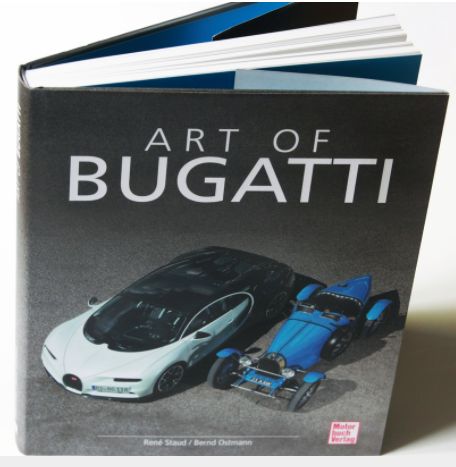
Art of Bugattiby René Staud (Photographs) and Bernd Ostmann (Text) German description: see below. Nobody would disagree if you would compare the cars that Ettore Bugatti built with art. They were masterpieces of automobile history and they are among the icons of the pre-war era. The Bugatti Type 57 SC Atlantic and of course the Bugatti Type 35 racing car will not be forgotten. It goes without saying that people enjoy writing books about such cars. “Art of Bugatti” has recently been released, with René Staud and “auto motor und sport” veteran Bernd Ostmann figuring as authors. They have divided the Bugatti history into three era's, namely those from 1909 to 1963, the Artioli phase with the EB110 (1987 to 1995) and the modern era.
Three differently weighted era's It is nice, however, that texts and images are not only allowed to the famous and well-known types, but also to the less popular types 64 and 252. Still more exciting is the second part with the history of the EB110 (and the EB112), which Ostmann experienced himself. Some of the information is unfortunately presented on very few pages. Era III is given a lot of space with the Bugatti prototypes and series models developed under VW ownership. Significantly more than half of the book was devoted to Bugatti’s last 20 years. Anyone who is enthusiastic about the horsepower high-flyers of the modern era will certainly not see this as a negative point. This part also has the best photos and of course a lot of inside knowledge.
Driving impressions as an essential part But you take a reading, so to speak, on the passenger seat of the types 35, 51, 57, 64, 252 and even the type 57SC Atlantic (driven on the occasion of the Klausenrennen Memorial), a pleasure that is hardly ever granted to you otherwise.
More like a coffee table as a reference work As a disadvantage of the conception, we would like to mention that the book was published in two languages, which of course halved the amount of text and also pushed the work towards the “coffee table”. But it should be said that leafing through it is fun, after all, the beautiful cars from Molsheim and Co. are a pleasure in pictures and close to automotive art.
|
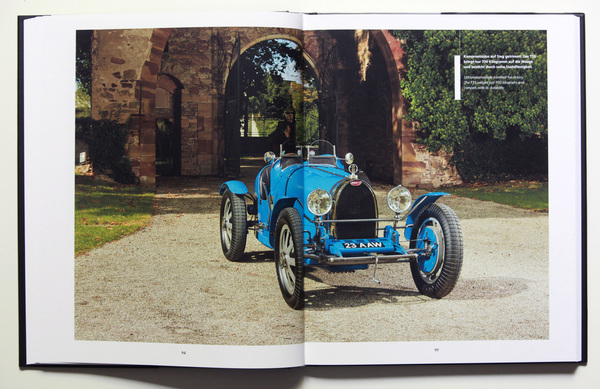

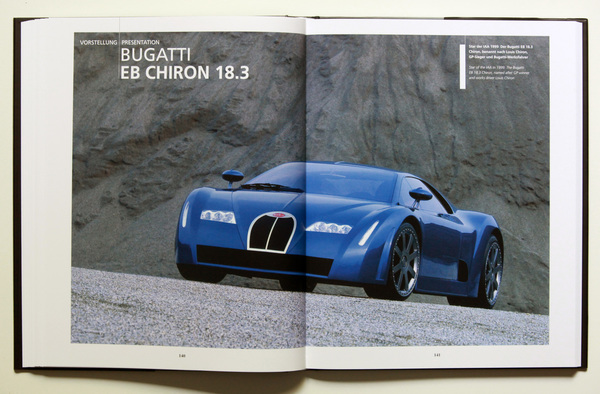
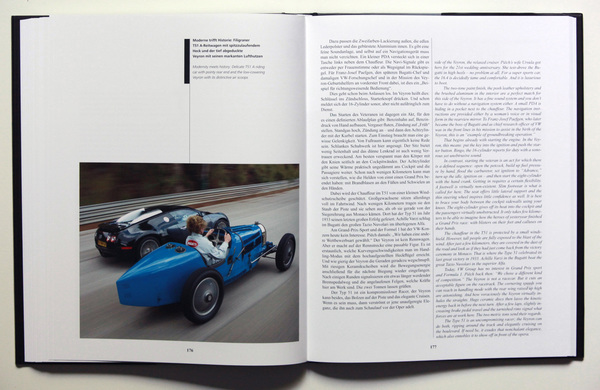
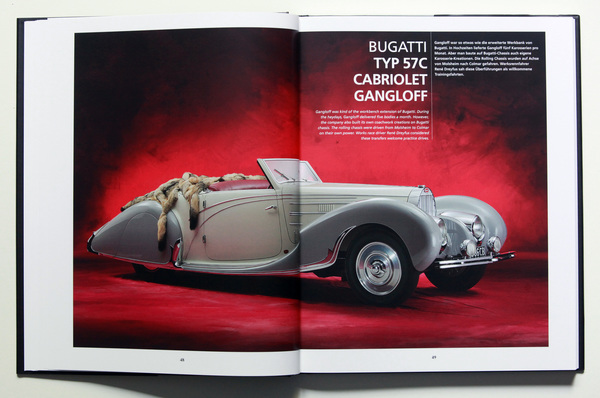
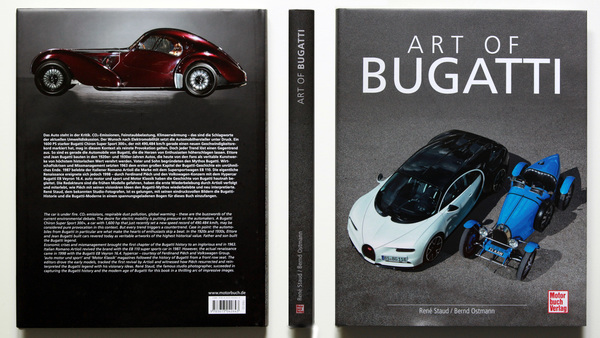
|
Deutsch Niemand würde widersprechen, wenn man die Autos, die Ettore Bugatti baute, mit Kunst vergleicht. Sie waren Meisterwerke der Automobilgeschichte und sie gehören zu den Ikonen der Vorkriegsepoche. Unvergessen sind der Bugatti Typ 57 SC Atlantic und natürlich auch der Bugatti Typ 35 Rennwagen. Dass man über solche Autos gerne Bücher schreibt, ist selbstredend. Frisch erschienen ist nun “Art of Bugatti”, als Autoren figurieren René Staud und “auto motor und sport”-Urgestein Bernd Ostmann. Sie haben die Bugatti-Geschichte in drei Epochen aufgeteilt, nämlich in jene von 1909 bis 1963, in die Artioli-Phase mit dem EB110 (1987 bis 1995) und in die Neuzeit.
Drei unterschiedlich gewichtete Epochen Schön ist allerdings, dass man nicht nur den berühmten und bekannten Typen Texte und Bilder zugestand, sondern auch den weniger populären Typen 64 und 252. Spannender ist trotzdem der zweite Teil mit der Geschichte des EB110 (und des EB112), die Ostmann selber miterlebt hat. Hier wird einiges an Information auf leider sehr wenigen Seiten dargeboten. Richtig viel Raum erhält dann die Epoche III mit den unter VW-Ägide entstandenen Bugatti-Prototypen und Serienmodellen. Deutlich mehr als die Hälfte des Buchs wurde damit den letzten 20 Jahren von Bugatti gewidmet. Wer von den PS-Überfliegern der Neuzeit begeistert ist, wird dies gewiss nicht als negativen Punkt sehen. In diesem Teil finden sich auch die besten Fotos und natürlich viel Insiderwissen.
Fahreindrücke als wesentlicher Teil Dafür nimmt man aber sozusagen lesenderweise auf dem Beifahrersitz der Typen 35, 51, 57, 64, 252 und sogar des Typ 57 SC Atlantic (gefahren anlässlich des Klausenrennen Memorials) Platz, ein Vergnügen, das einem sonst kaum je gewährt ist.
Eher Coffee-Table als Nachschlagewerk Als Nachteil der Konzeption möchten wir noch erwähnen, dass das Buch zweisprachig publiziert wurde, was natürlich die Textmenge nochmals halbiert und das Werk zusätzlich in Richtung “Coffee Table” schiebt. Doch sei gesagt, dass das Durchblättern Spass macht, schliesslich sind die schönen Autos aus Molsheim und Co auch auf Bildern ein Genuss und eben nahe an automobiler Kunst.
|